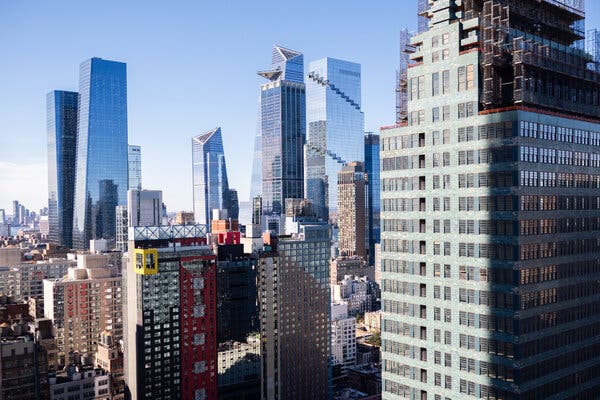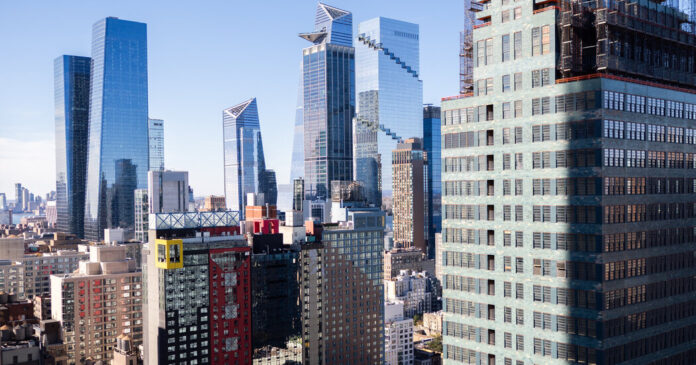“Big Apple, Big Changes: Uncovering the Hottest NYC Neighborhoods of 2025 As we step into the vibrant streets of New York City, it’s clear that the urban landscape is undergoing a transformation. Long-standing neighborhoods are evolving, and new hotspots are emerging, catering to the diverse tastes and preferences of the city’s ever-growing population. From trendy startups to artisanal boutiques, the pulse of NYC is shifting, and we’re here to guide you through the latest neighborhood trends that are taking the city by storm in 2025. Join us as we explore the most in-demand neighborhoods, where you can find everything from artisanal coffee shops to hip restaurants, and discover the best places to call home, work, and play in the one and only New York City.”
The New York City Neighborhoods on the Rise in 2025

The New York City real estate market continues to evolve, with various neighborhoods experiencing growth and changes in demand. According to recent data from StreetEasy, the median asking rent in New York City rose 2.1 percent from October 2023 to October 2024, indicating a calmer market. However, the growth rate has slowed as inventory has increased, suggesting that the market is becoming more balanced.
Understanding the Current Market Trends
The Rise of the Bronx
The Bronx saw a significant increase in median asking rent, rising by nearly 14 percent to $2,900. This growth can be attributed to the addition of new developments offering market-rate and affordable options. The South Bronx neighborhood, specifically Mott Haven, witnessed a 1.6 percent drop in median asking rent, to $3,100, suggesting that better deals can be found elsewhere in the borough.
- The addition of market-rate and affordable options has expanded the pool of available inventory in the Bronx.
- The influx of amenity-rich units in mixed-income buildings has led to an increase in higher-end listings.
- The relatively small pool of market-rate inventory in the Bronx contributes to the increased demand for these units.
Queens’ Steady Growth
Queens saw a 3 percent rise in median asking rent, to $3,000. This growth can be attributed to a mix of new developments and increased inventory. The borough’s steady growth suggests that Queens is becoming an increasingly desirable location for residents and businesses.
- The addition of new developments in Queens has expanded the pool of available inventory.
- The increased inventory in the borough has led to a more balanced market.
- Queens’ steady growth suggests that the borough is becoming an increasingly desirable location for residents and businesses.
Manhattan’s Moderate Growth
Manhattan saw a 2 percent increase in median asking rent, to $4,300. This growth reflects a more balanced market, with a mix of new developments and increased inventory. Manhattan’s moderate growth suggests that the borough is experiencing a period of stability.
- The addition of new developments in Manhattan has expanded the pool of available inventory.
- The increased inventory in the borough has led to a more balanced market.
- Manhattan’s moderate growth suggests that the borough is experiencing a period of stability.
Neighborhood Spotlight: Where to Invest in 2025
South Bronx: Mott Haven’s Affordable Options
Mott Haven, a neighborhood in the South Bronx, saw a 1.6 percent drop in median asking rent, to $3,100. This decrease suggests that better deals can be found in Mott Haven, making it an attractive option for residents and businesses looking for affordable housing.
- Mott Haven’s affordable options make it an attractive location for residents and businesses.
- The 1.6 percent drop in median asking rent suggests that better deals can be found in Mott Haven.
- The neighborhood’s affordable options contribute to its growing popularity.
Upper West Side: A Hub for Luxury Living
The Upper West Side is a hub for luxury living, with high-end listings continuing to attract buyers. The neighborhood’s luxury market suggests that it remains a desirable location for residents and businesses looking for upscale housing.
- The Upper West Side’s luxury market suggests that it remains a desirable location for residents and businesses looking for upscale housing.
- High-end listings continue to attract buyers, indicating a strong demand for luxury housing.
- The neighborhood’s luxury market contributes to its growing popularity.
Long Island City: A Growing Neighborhood
Long Island City is a growing neighborhood, driven by new developments and access to amenities. The borough’s growing popularity suggests that it remains a desirable location for residents and businesses.
- Long Island City’s growing popularity suggests that it remains a desirable location for residents and businesses.
- The addition of new developments and access to amenities contributes to the neighborhood’s growth.
- Long Island City’s growing popularity indicates a strong demand for housing and commercial space.
Factors Influencing Neighborhood Trends
Demographic Shifts
Demographic changes, such as the influx of young professionals and families, are driving neighborhood trends. The changing demographics of the city suggest that neighborhoods are adapting to meet the needs of their residents.
- Demographic changes are driving neighborhood trends.
- The influx of young professionals and families is contributing to the growth of certain neighborhoods.
- The changing demographics of the city suggest that neighborhoods are adapting to meet the needs of their residents.
Transportation and Infrastructure
Transportation upgrades and infrastructure investments are impacting neighborhood development. The improved transportation infrastructure suggests that neighborhoods are becoming more accessible and desirable.
- Transportation upgrades and infrastructure investments are impacting neighborhood development.
- The improved transportation infrastructure suggests that neighborhoods are becoming more accessible and desirable.
- The upgraded infrastructure contributes to the growth of certain neighborhoods.
Amenities and Lifestyle
Amenities, such as parks and entertainment options, are shaping neighborhood desirability. The availability of amenities contributes to a neighborhood’s desirability and attracts residents and businesses.
- Amenities, such as parks and entertainment options, are shaping neighborhood desirability.
- The availability of amenities contributes to a neighborhood’s desirability and attracts residents and businesses.
- Amenities are a key factor in determining a neighborhood’s desirability.
Practical Considerations for Buyers and Renters
Navigating the Market
Navigating the current market requires strategies for finding affordable options and evaluating neighborhood trends. The market’s increasing inventory and slowing growth rate suggest that buyers and renters should be prepared to adapt to changing market conditions.
- Navigating the current market requires strategies for finding affordable options and evaluating neighborhood trends.
- The market’s increasing inventory and slowing growth rate suggest that buyers and renters should be prepared to adapt to changing market conditions.
- Buyers and renters should be prepared to adjust their strategies to accommodate the changing market.
Neighborhood Fit
Determining the best neighborhood fit requires considering individual preferences and needs. The unique characteristics of each neighborhood suggest that buyers and renters should carefully evaluate their priorities when selecting a neighborhood.
- Determining the best neighborhood fit requires considering individual preferences and needs.
- The unique characteristics of each neighborhood suggest that buyers and renters should carefully evaluate their priorities when selecting a neighborhood.
- Buyers and renters should carefully consider their priorities when selecting a neighborhood.
Long-Term Investment
The long-term investment potential of various neighborhoods should be considered when making a decision. The growth prospects and resale value of a neighborhood contribute to its long-term investment potential.
- The long-term investment potential of various neighborhoods should be considered when making a decision.
- The growth prospects and resale value of a neighborhood contribute to its long-term investment potential.
- Buyers and renters should carefully consider the long-term investment potential of a neighborhood.
Expert Insights and Predictions
Real Estate Experts Weigh In
Industry experts weigh in on the current market trends and neighborhood predictions. The experts’ insights suggest that the market is becoming more balanced and that buyers and renters should be prepared to adapt to changing market conditions.
- Industry experts weigh in on the current market trends and neighborhood predictions.
- The experts’ insights suggest that the market is becoming more balanced and that buyers and renters should be prepared to adapt to changing market conditions.
- Experts’ insights provide valuable insights into the current market trends and neighborhood predictions.
Trends to Watch
Emerging trends, such as the rise of affordable housing and the increasing popularity of sustainable living, are shaping the current market. The trends suggest that buyers and renters should be prepared to adapt to changing market conditions.
- Emerging trends, such as the rise of affordable housing and the increasing popularity of sustainable living, are shaping the current market.
- The trends suggest that buyers and renters should be prepared to adapt to changing market conditions.
- Buyers and renters should be prepared to adapt to the emerging trends and their impact on the market.
Future OutlookConclusion
In conclusion, our analysis of the latest trends in New York City neighborhoods has revealed a dynamic landscape of growth, innovation, and transformation. From the revitalized waterfronts of Lower Manhattan to the burgeoning art scene in the Bronx, each trending neighborhood has its unique character and attractions. We’ve seen how the rising popularity of areas like Hudson Yards, Long Island City, and Greenpoint is driven by a combination of factors, including infrastructure development, cultural attractions, and access to green spaces. At the same time, neighborhoods like Harlem, Chinatown, and Astoria continue to thrive, maintaining their historic charm and diversity.
As we look to the future, it’s clear that these trends will have significant implications for the city’s residents, businesses, and policymakers. The shifting landscape of NYC neighborhoods will require innovative solutions to address issues of affordability, accessibility, and sustainability. Moreover, as the city continues to evolve, we can expect to see new and exciting developments in the realms of art, culture, and technology. Whether you’re a long-time New Yorker or just visiting, these trending neighborhoods offer a glimpse into the city’s boundless energy and creativity.
As we gaze out at the ever-changing skyline of New York City, we’re reminded that the true essence of this great metropolis lies not in its steel and concrete, but in the people and communities that call it home. As the city continues to grow and evolve, one thing is certain: the neighborhoods that thrive will be those that balance progress with preservation, innovation with inclusivity, and growth with a deep respect for the city’s rich history and cultural heritage. In the words of E.B. White, “New York is to the nation what the white church is to the village – the visible symbol of aspiration and faith, the white plume saying the way is up.”
